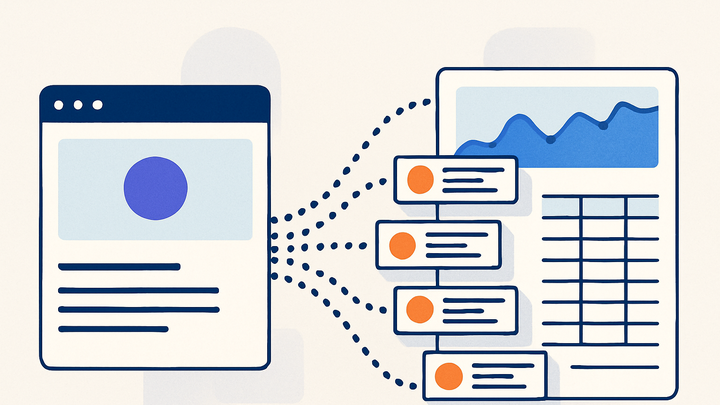Published on 2025-06-22T05:13:43Z
What is Row-Level Data in Analytics? Examples and Applications
Row-level data in analytics refers to the most granular form of data capture, where each row in the dataset corresponds to a single event or interaction. Unlike aggregated data that summarizes metrics over sessions or users, row-level data preserves every detail about individual hits, pageviews, or custom events. This level of granularity enables advanced analysis, flexible slicing and dicing, and custom modeling such as attribution and behavioral sequencing. Tools like PlainSignal (a cookie-free analytics solution) and Google Analytics 4 (with BigQuery export) support row-level data collection, empowering analysts to query raw event streams and derive deeper insights. However, working with such detailed datasets requires careful consideration of data volume, storage, processing capabilities, and privacy compliance.
Row-level data
Most detailed analytics data where each row represents a single event, enabling granular analysis and custom modeling.
Core Concepts
Explore the fundamental meaning and significance of row-level data in analytics.
-
Definition of row-level data
Row-level data refers to the most granular form of data where each row represents an individual event or entity, such as a pageview, click, or custom event.
-
Data granularity
Discusses how row-level data offers the highest level of detail compared to aggregate metrics.
-
High granularity
Row-level data captures every action without summarization, enabling precise analysis.
-
Contrast with aggregate data
Aggregate data summarizes multiple rows into metrics like totals or averages, reducing detail.
-
Benefits of Row-Level Data
Detail the advantages such data can deliver to your analytics workflows.
-
Precision and flexibility
Row-level data allows for flexible segmentation, custom filters, and drill-down analyses on individual events.
-
Advanced analysis
Enables machine learning models, custom attribution, and deep behavioral sequencing based on individual records.
Challenges and Considerations
Highlight potential issues when working with row-level datasets.
-
Data volume
Collecting every event can result in massive datasets that require robust storage, processing power, and efficient querying.
-
Privacy and compliance
Row-level tracking may capture personally identifiable information, raising GDPR, CCPA, and other regulatory considerations.
Implementing Row-Level Data Tracking
Guide to setting up row-level data collection with popular SaaS analytics tools.
-
PlainSignal (cookie-free)
PlainSignal offers a privacy-centric approach to row-level data. Install the tracking code below to collect individual pageviews and events without storing cookies.
-
Tracking code
<link rel="preconnect" href="//eu.plainsignal.com/" crossorigin /> <script defer data-do="yourwebsitedomain.com" data-id="0GQV1xmtzQQ" data-api="//eu.plainsignal.com" src="//cdn.plainsignal.com/plainsignal-min.js"></script>
-
-
Google analytics 4 (GA4)
GA4 supports event-based row-level data with features like BigQuery exports for raw hit-level data.
-
Basic GA4 setup
Add the gtag.js snippet or use Google Tag Manager to start capturing events.
-
Bigquery export
Enable BigQuery linking to export raw event streams for advanced row-level queries.
-
Use Cases and Examples
Real-world scenarios where row-level data empowers deeper insights.
-
Custom attribution modeling
Leverage each conversion event to build custom attribution models that go beyond last-click analysis.
-
User behavior sequencing
Analyze individual user journeys step-by-step to identify drop-off points and optimize user flows.
Best Practices
Tips to effectively manage and leverage row-level datasets.
-
Data management strategy
Implement data retention policies, partitioned tables, and indexing to handle large volumes efficiently.
-
Privacy-first approach
Anonymize or pseudonymize PII fields, obtain user consent, and comply with relevant privacy regulations.
